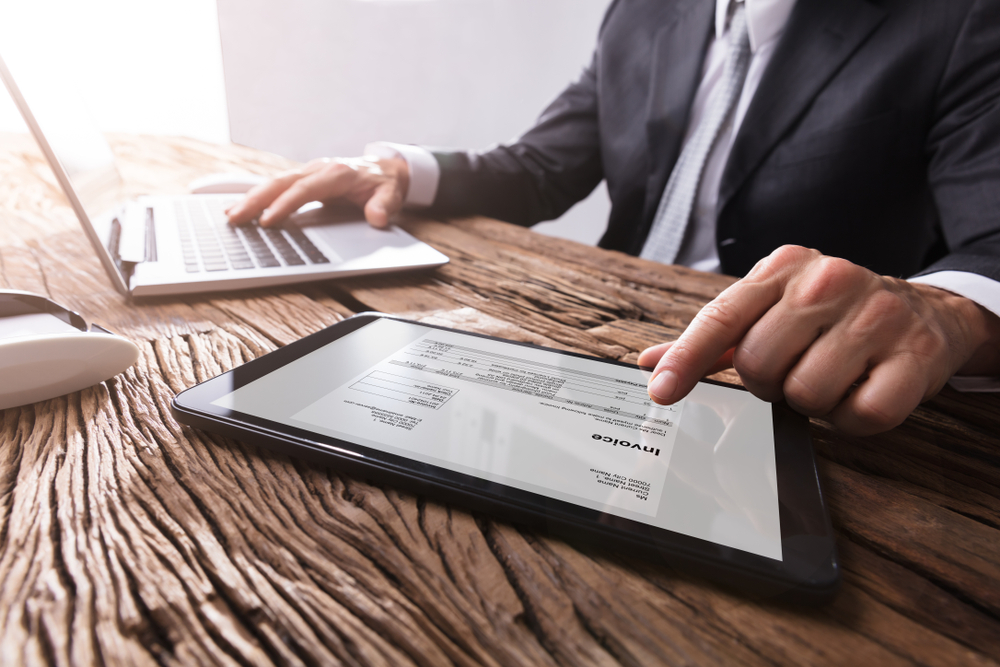It’s the bottom line of your business – getting paid for the goods or services you have provided.
Your invoicing processes play a vital role in your cash flow, you need to be paid by your customers to keep things running smoothly and revenue flowing into your business bank account.
And yet, according to Xero, almost half of all invoices are paid late, So what can your business do to make invoicing matter more?
Read on for five tips on effective invoicing for your business.
Clear payment terms
Good practice invoicing should start with clear payment terms outlining how and when you expect to be paid. Getting this arranged from the beginning means that there’s no confusion down the line and the client is clear about your payment expectations before you start supplying them.
It used to be common for customers to pay you within 30 days of getting your invoice, BUT this is not the ‘law’. You can set your own payment terms to be much shorter than this. If you’re quick and efficient in meeting your clients’ deadlines, then it is only fair to expect swift payment in return and you can set short payment terms accordingly to reduce payment delays. It is now much more common to see payment terms of 1-2 weeks.
Your payment terms should also clearly state which forms of payment you accept. Offering a range of payment methods will make things convenient for more customers. Include your bank details for bank transfers and if you send online invoices, you can add a ‘pay now’ button to link the customer directly to make a payment online.
You can also consider discounts for early or upfront payments and penalties for late payments in your payment terms.
Effective invoicing
You need to create an invoicing system that works efficiently for you and your business. As you grow, your business’ invoicing will become more complex and the system you use will need to support this.
Follow good invoicing etiquette to help invoices get paid promptly. If it is not a one off project then why not create a proposal which highlights what you are doing and when you will be invoiced. The invoice can then mirror that proposal. As an alternative, send your invoice with a polite covering letter or email as soon as possible after the work is completed, when the work is still fresh in the client’s mind and so that you don’t delay your payment.
Make the invoice clear and easy to understand, and ensure you include:
– Clearly marked as ‘Invoice’
– Date
– Invoice number
– Your business name, address, logo, and VAT number if applicable
– Client name and address
– Customer or purchase order number
– Short description of the goods or services supplied and the price
– VAT
– Payment terms
– Payment methods
Use this as a template for future invoices and make sure your invoice goes straight to the person who makes payments.
Chasing late payments
Don’t wait until an invoice is late before reminding the client; a friendly email as the due date approaches can be enough in most cases to prompt payment.
If the invoice becomes overdue, re-send the invoice, and remind the client again. Follow it up with a phone call – chasing payments by phone can often get the best response.
If the client still hasn’t paid, you can consider taking some more stringent steps. You could add overdue fees (which must have been outlined in your original payment terms), use a statutory demand to formally request payment of what you’re owed, or stop fulfilling their orders until outstanding invoices are paid.
Use the power of tech
Accounting software can help you with every step of your invoicing process, saving you time and speeding up the billing processes.
If you have recurring invoices the software can be scheduled to automatically send these to your customers on a regular basis and send them reminders.
You can customise and use quote and invoice templates that can easily be edited and sent from your computer or even from your phone as soon as the work is completed.
You can use the software to offer a ‘pay now’ option for customers with credit or debit cards.
And because the invoicing is being done from within your accounts, your books are also automatically updated as invoices are issued and paid.
Use your accountant
If you just can’t find the time to keep on top of your invoicing and bookkeeping, talk to your accountant about how they can help to manage your invoicing.
Find out more about effective bookkeeping and accounting for your business
To find out how Chorus Accounting can help you with bookkeeping and accounts for your business, let’s talk. Call 01202 332500 and one of the team will be happy to help.

